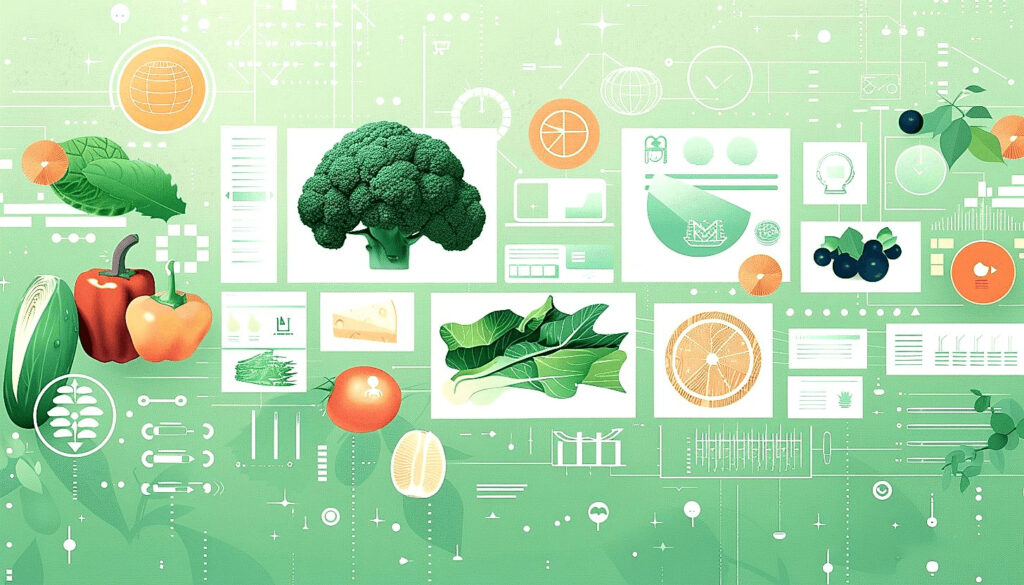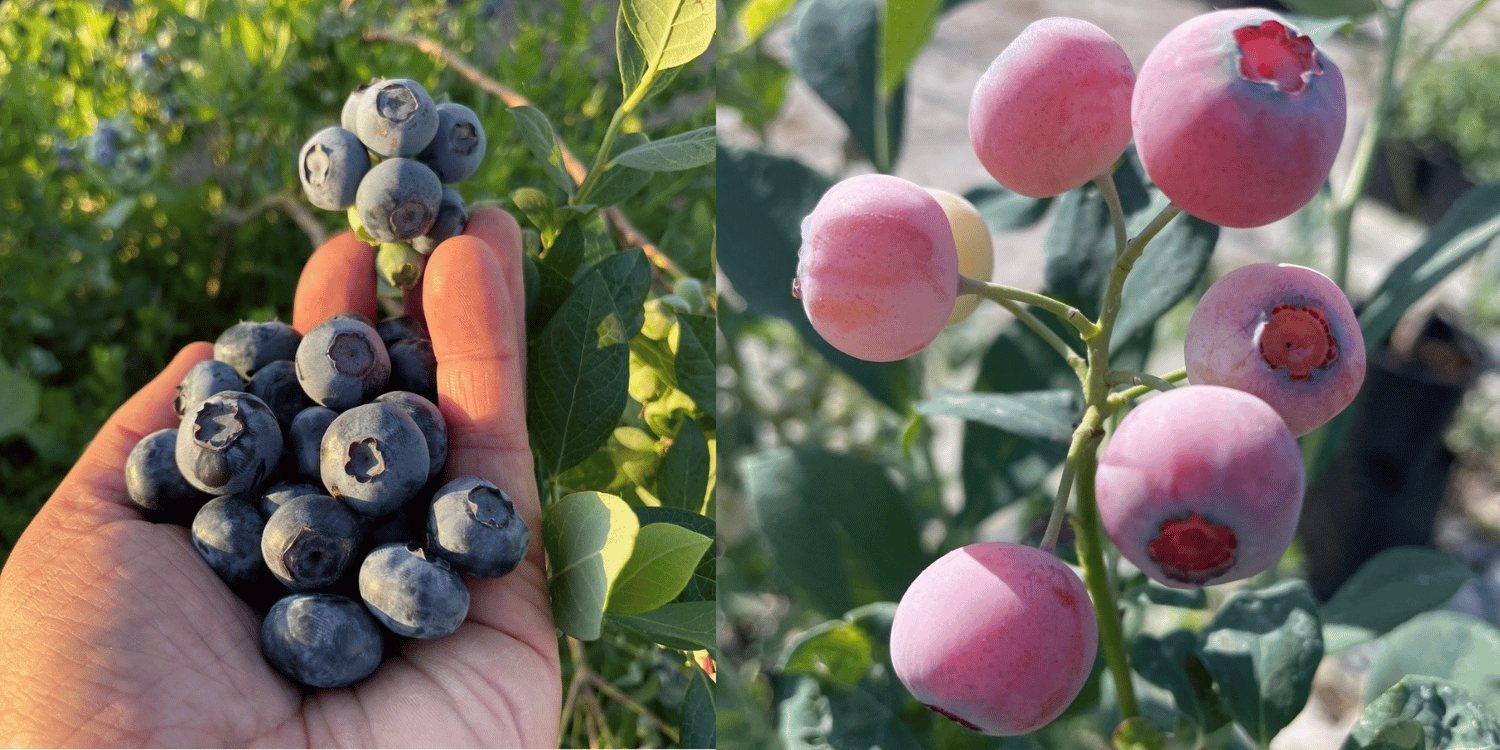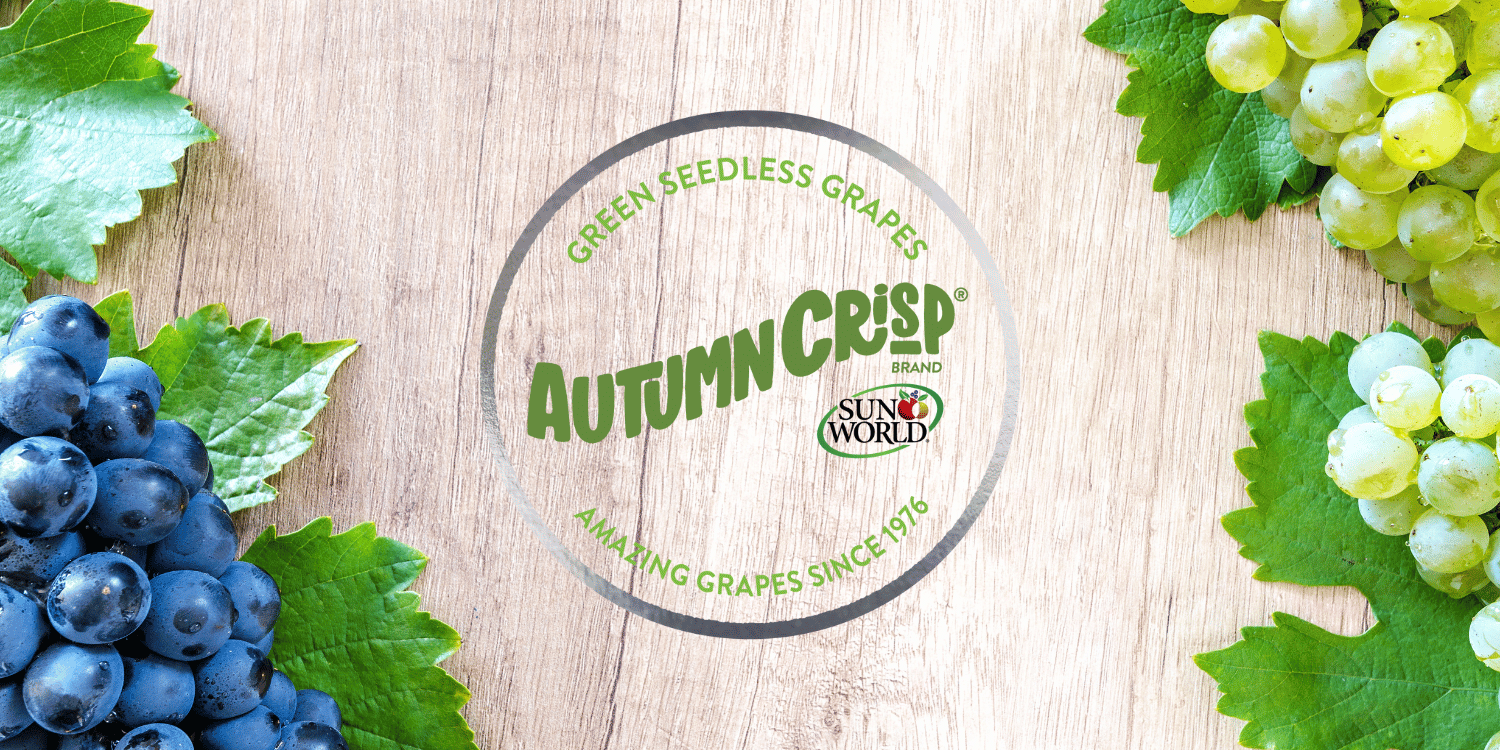Artificial Intelligence (AI) has increasingly become a important tool in many industries.
The agricultural sector is not left out, with a particular emphasis on fresh produce.
Globally, an alarming quantity of fruits and vegetables go to waste each year, mostly due to infrastructural inefficiencies.
AI application in agriculture presents a promising solution to this menace, with potential benefits spanning the entire fresh produce supply chain.
From precision farming during cultivation to AI-driven sorting during harvest, and even smart storage in warehouses, these technologies offer waste reduction strategies.
This article presents a comprehensive guide into how AI effects changes in agricultural practices to mitigate fresh produce waste.
- Predictive analytics can optimize harvest timings.
- AI optimizes supply chain distribution in real time.
- AI enhances quality control and product grading.
- Automated freshness tracking for perishables using AI.
- Demand forecasting to prevent overproduction is possible with AI.
Moving forward, we will be discussing other equally relevant topics that revolve around the invaluable role of AI in tackling the issue of fresh produce waste.
I’ll be expounding on how technology, particularly AI, can immensely contribute to sustainable farming practices and how it can drive efficiency in food production.
In the following sections, the focus will be on the potential of AI-driven tech in shaping a more sustainable and efficient future for agricultural industries.
It’s worth sticking around as the following discussions offer insights you might find significant and groundbreaking.
Contents
- Impacts Of Ai On Reducing Fresh Produce Waste
- 1. Predictive Analytics for Precise Harvest Timings
- 2. Intelligent Optimization of Supply Chain Distribution
- 3. Enhanced Quality Control and Grading of Products
- 4. Automated Tracking of Freshness for Perishables
- 5. Demand Forecasting for Reducing Overproduction
- 6. AI-powered food preservation technologies
- 7. Machine Learning for Efficient Inventory Management
- The Bottom Line
Impacts Of Ai On Reducing Fresh Produce Waste
1. Predictive Analytics for Precise Harvest Timings
In Short: Using Artificial Intelligence and predictive analytics in agriculture helps determine precise harvest timings, improving product quality and reducing farm produce waste. These advanced methods use various data like weather forecasts, historical climate trends, and soil conditions to forecast optimal harvest time, potential pest infestations, and adverse weather conditions.
The application of predictive analytics in agriculture, specifically in determining accurate harvest timings, has substantially mitigated the problem of fresh produce waste.
Accurate prediction of harvest timings is crucial to maintain product quality, minimize overproduction, and reduce fresh produce waste.
In the past, farmers struggled to perfectly time their harvests, mostly relying on estimated timelines, manual observations of visible crop maturity, and even intuitive guesswork.
These traditional methods, however, brought about significant inaccuracies, leading to early or late harvests and thereby impacting the quality and shelf-life of fresh produce.
However, with the advent of Artificial Intelligence (AI), the landscape of farming has drastically changed.
AI, through predictive analytics, has introduced a more scientific and precise approach to predicting accurate harvest timings.
This ensures optimal product freshness and quality when reaching the market, followingly reducing potential fresh produce waste.
Predictive analytics utilizes various types of data such as weather forecasts, historical climate data, crop growth trends, and soil conditions.
Predictive analytics models process this data and provide predictive insights on the optimal time to harvest crops, potentially with a high degree of accuracy.
This approach to planning the harvesting phase essentially takes the guesswork out of the equation, ensuring that crops are harvested at their peak quality and freshness.
Furthermore, predictive analytics can also help forecast potential pest infestations or adverse weather conditions that could spoil crops.
This enables farmers to make necessary preparations or adjust their harvest timings to preserve the quality and freshness of their produce.
Moreover, precise harvest timings via predictive analytics often coincide with market demands, preventing overproduction and underproduction scenarios.
This dramatically reduces fruit and vegetable waste, ensuring that a majority of harvested products find their way to consumer’s plates rather than ending up in landfill sites.
Here are some key advantages of using predictive analytics for precise harvest timings:
- Improved Product Quality: Crops harvested at their ideal maturity offer better taste and nutritional value.
- Longer Shelf Life: Properly timed harvesting results in extended shelf life, reducing the chances of the produce spoiling before it reaches the consumer.
- Reduced Waste: By matching harvesting with market demands, overproduction and consequentially, food waste, is minimized.
- Pest Infestation and Adverse Weather Forecast: Prediction of adverse conditions helps farmers take preventive measures, thereby reducing potential spoilage and waste.
To sum up, predictive analytics presents a powerful tool that farmers can leverage not only to enhance their harvesting strategies but also to commit to a more sustainable approach.
Towards reducing fresh produce waste, the role of AI and predictive analytics proves invaluable.
2. Intelligent Optimization of Supply Chain Distribution
In Short: Artificial Intelligence (AI) is playing a pivotal role in reducing food waste through intelligent optimization of fresh produce supply chains, increasing efficiency, and enhancing distribution. AI’s predictive capabilities, real-time tracking, route optimization, inventory control, and communication bridging significantly streamline the supply network, improve the quality of produce, and boost businesses’ competitiveness and sustainability.
The increasing implementation of artificial intelligence (AI) in fresh produce supply chains is leading to significant reductions in food waste.
By embracing intelligent optimization, companies are improving efficiency in distribution and effectively curtailing waste in the process.
In this setting, AI serves as an indispensable tool to forecast, manage, and optimize the logistical aspect of fresh food distribution.
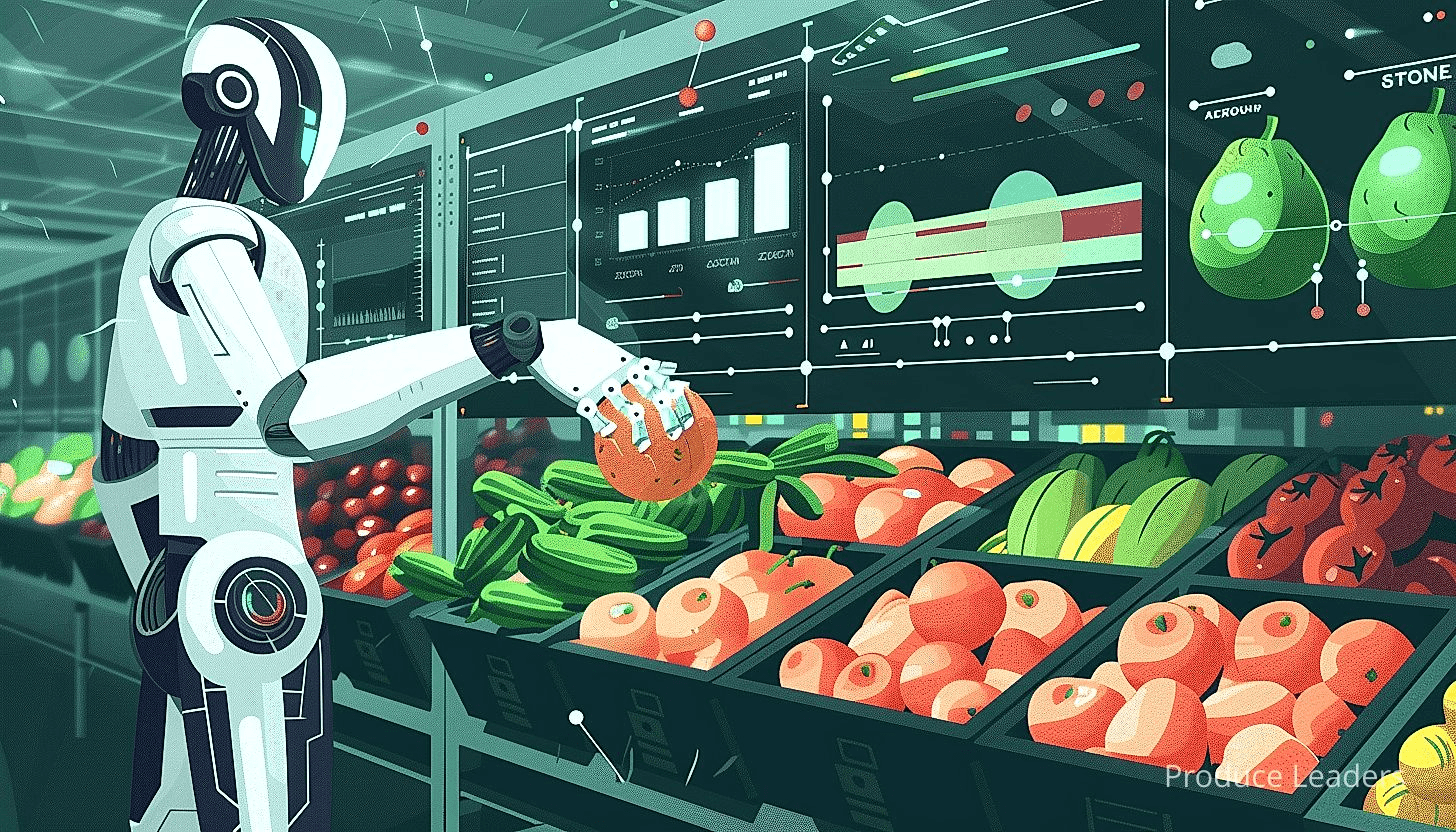
The superior predictive capabilities of AI allow for precise estimation of delivery timelines, taking into account factors like weather conditions and road traffic.
This degree of accuracy in delivery schedules reduces idle time for perishable goods, thereby minimizing the potential for spoilage.
AI-powered systems also offer real-time tracking capabilities, contributing to a more effective and responsive supply chain distribution.
Here are some key areas wherein AI significantly improves supply chain efficiency:
- Route Optimization: AI algorithms can predict the fastest and most efficient routes for deliveries, saving time and ensuring fresh produce doesn’t spoil in transit.
- Warehouse Management: Intelligent systems can monitor and manage warehouse conditions to ensure optimal handling and storage of fresh produce.
- Inventory Control: AI technology can forecast demand patterns and manage inventory levels accurately, reducing overstocking and following produce waste.
Moreover, the invaluable role of AI doesn’t end with efficient logistics.
It also bridges the gaps in communication throughout the supply chain by seamlessly connecting farmers, wholesalers, retailers, and consumers.
A smoothly integrated supply network minimizes miscommunications, ensuring everyone is on the same page in terms of quantities, delivery times, and other crucial details.
Consequently, food is less likely to be wasted on account of order inaccuracies or scheduling issues.
Artificial intelligence, therefore, not only optimizes the distribution chain but also enhances the quality of fresh produce delivered to the end consumers.
In harnessing its potential, businesses can boost their competitiveness and sustainability by maximizing efficiency and reducing waste.
3. Enhanced Quality Control and Grading of Products
In Short: AI technologies contribute to reducing food waste by enabling enhanced quality control and precise grading of products in the food industry. They accurately identify spoilage, predict product lifespan, and grade produce, improving operational efficiency and promoting environmental sustainability.
The application of Artificial Intelligence (AI) in rampant sectors continues to yield promising results, and the reduction of fresh produce waste is no exception.
With enhanced quality control and grading of products, AI presents a high potential for reducing unnecessary wastage and optimizing resource utilization within the food industry.
The focus on precision and accuracy in AI systems ensures the selection of high-quality products with longer shelf-life, thus decreasing the chances of premature spoilage.
The utilization of computer vision technology coupled with machine learning algorithms supports not only the identification of spoilage but also the prediction of product lifespan based on subtle differences in color, size, and texture that may be overlooked by the human eye.
AI technologies are also increasingly accurate in their grading and sorting of produce, taking into account factors such as size, weight, internal quality, and even sweetness.
Additionally, through the system’s integration with existing operational structures, AI adds value in conveying this information expediently, allowing for better informed decision-making processes and ultimately minimizing waste.
Implementing these technologies at the very start of the supply chain, during harvesting and first-stage processing, provides a measurable impact on the overall waste reduction.
Let’s dig a bit deeper into the outcomes of applying AI in quality control:
- Identifying Damages: Machine learning algorithms can easily identify damages or diseases in produce that humans might miss, thus preventing the spread of it to other products.
- Improved Grading Systems: AI can grade items meticulously based on internal and external quality, ensuring that only high-quality produce enters the market.
- Shelf-life Estimation: AI systems can predict the potential shelf-life of products, allowing for optimized product rotation and the prevention of overstocking.
Such technology, therefore, not only guarantees improved quality control and grading of products but also lays a solid foundation for following steps in the production and distribution process.
While this sounds promising, adapting and integrating these AI technologies into existing systems may pose its challenges.
Still, with the growing concern over food waste and environmental sustainability, the move towards implementing AI seems inevitable and, frankly, essential.
It provides efficient solutions to streamline operations, improve product quality and indirectly curb the food waste crisis, all while ensuring businesses remain competitive in the ever-evolving market.
With further development, refinement, and adoption, we may soon see AI technologies becoming a standard in quality control and grading across the industry.
The reduction of food waste is not only an ethical and environmental imperative but also a significant opportunity for businesses to reduce costs and improve overall operational efficiency.
Therefore, utilizing AI’s capabilities in enhancing quality control and grading is a forward≤-looking step in ensuring the sustainability of our food supply, while also addressing global waste issues.
4. Automated Tracking of Freshness for Perishables
In Short: Artificial intelligence is significantly transforming the fresh produce industry by automating the tracking of freshness for perishables, aiding in minimizing waste, improving product safety, and informing decision-making. Successful application relies on a range of factors including properly calibrated and programmed systems, appropriate infrastructure, employee training, and reliable data.
The drive towards minimizing waste in the fresh produce industry is witnessing a transformative shift, thanks to the advent and following application of artificial intelligence (AI).
One key area where the impacts of AI are significantly felt is the automated tracking of freshness for perishables. This process fundamentally redefines the way freshness of fresh produce, which has inherent perishability, is tracked.
At its core, automated tracking involves the use of AI-powered systems to monitor and determine the freshness of food products – notably fruits and vegetables.
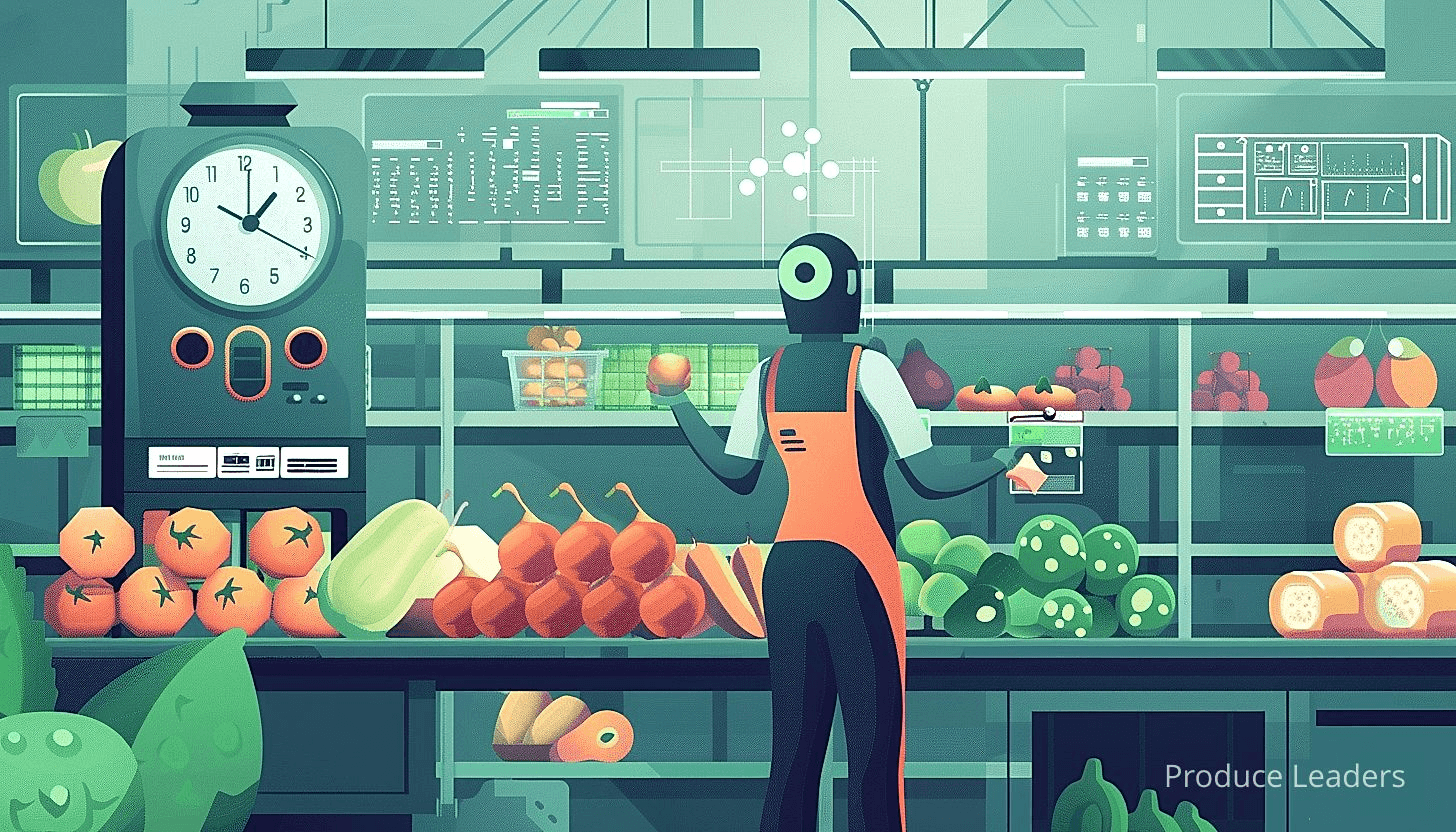
How does it work then, you might wonder? Quite simply, these systems leverage advanced algorithms and machine learning processes to analyze various data points.
These include, but are not limited to, the temperature at which the food is stored, visual aspects of the food such as its color and texture, as well as the duration of storage.
The automated tracking system then applies these data points against predefined parameters.
Based on these calculations, the system determines whether the food is fresh, nearing expiry, or spoiled.
The benefits of this automation are multifaceted. To highlight a few:
- Reduction in Food Waste: By accurately predicting the freshness level, AI enables proactive measures to be taken to utilize the produce before it reaches spoilage.
- Improved Product Safety: The system’s ability to detect spoilage prevents potentially hazardous food from reaching the consumer market.
- Informed Decision-making: The continual data generated from the tracking process can guide decision-making processes such as adjusting storage conditions or hastening distribution.
The use of automated tracking of freshness for perishables in reducing waste, thus, holds promise in advancing sustainable food consumption.
Despite the positive strides in this area, it’s critical to acknowledge that the technology’s success will always be influenced by various factors.
This includes the need for proper calibration and programming of the tracking systems, coupled with appropriate infrastructure to support the operation of these systems.
The training and upskilling of personnel in the understanding and management of these AI-powered systems is also an essential consideration.
Pro Tip: The use of AI-powered systems for the automated tracking of freshness for perishables, which involves analyzing multiple data points, holds significant promise in reducing waste and advancing sustainable food consumption.
Moreover, consistent, reliable data is paramount for the accuracy and effectiveness of AI in tracking the freshness of perishables.
That said, with ongoing refienements and upgrades, these challenges are not insurmountable and AI’s role in reducing fresh produce waste is set to continue expanding.
5. Demand Forecasting for Reducing Overproduction
In Short: AI in demand forecasting significantly improves accuracy and reduces surplus in the fresh produce sector, leading to less waste and increased financial efficiency. With potential for worldwide impact on the food waste crisis, the technology is shaping the future of the sector despite being in developmental stages.
One of the most significant applications of AI in the fresh produce sector is in the realm of demand forecasting.
This technology leverages data about purchasing habits, market trends, and other relevant factors to make incredibly accurate predictions about future demand.
Traditionally, the challenge in the fresh produce industry has been managing overproduction.
Producers often end up with a surplus of goods due to unpredictable consumer behavior and other market variables, leading to enormous amounts of waste.
However, with the advent of AI and machine learning, businesses can now harness the power of predictive analytics to manage production more efficiently.
Demand forecasting tools enabled by AI can analyze vast amounts of data from various sources, including historical sales data, social media trends, weather patterns and more, in real-time.
I want to bring out some of the main benefits to the fresh produce industry by integrating AI in demand forecasting.
- Improved accuracy: Powerful algorithms can detect patterns and trends in massive datasets that would be impossible for a human to analyze manually.
- Optimized production: With more accurate demand forecasting, businesses can better align their production with real market needs, reducing overproduction and waste.
- Enhanced inventory management: By understanding what customers want and when they want it, producers can manage their inventories more efficiently, making sure products don’t go bad before they’re sold.
- Better financial planning: Knowing how much product is likely to be sold in the future helps in budget planning and other financial decisions.
This ability to predict consumer demand more accurately has a direct impact on reducing food waste, as producers can streamline their processes to produce only what’s necessary.
It’s not just about minimizing waste, either.
AI-backed demand forecasting also leads to significant cost savings, as companies spend less on production, storage, and disposal of excess goods.
On a broader scale, the mass adoption of such technologies could have substantial positive impacts on the worldwide food waste crisis.
As a necessary step towards sustainability in the fresh produce sector, leveraging AI for demand forecasting represents a revolution in how we approach food production and consumption.
While the potential of AI in this realm is immense, it’s important to note that the technology is still developing and has yet to reach its full potential.
Nonetheless, the forward trajectory appears promising, and the future of the fresh produce sector seems, by all indications, to be inexorably tied to the evolution of AI.
6. AI-powered food preservation technologies
In Short: AI-powered food preservation technologies are reducing food waste by enhancing the shelf life and nutritional quality of produce. Using machine learning, controlled atmosphere storage, and real-time monitoring, AI helps maintain optimal preservation conditions, decreases premature spoilage, and aids in understanding spoilage factors, reshaping our approach toward food waste reduction.
The rise of AI-powered food preservation technologies has brought a novel approach to reducing food waste.
These advanced methods not only boost the shelf-life of fresh produce, but also maintain their nutritional quality.
Artificial Intelligence can play an integral part in fine-tuning the process of food preservation using smart algorithms.
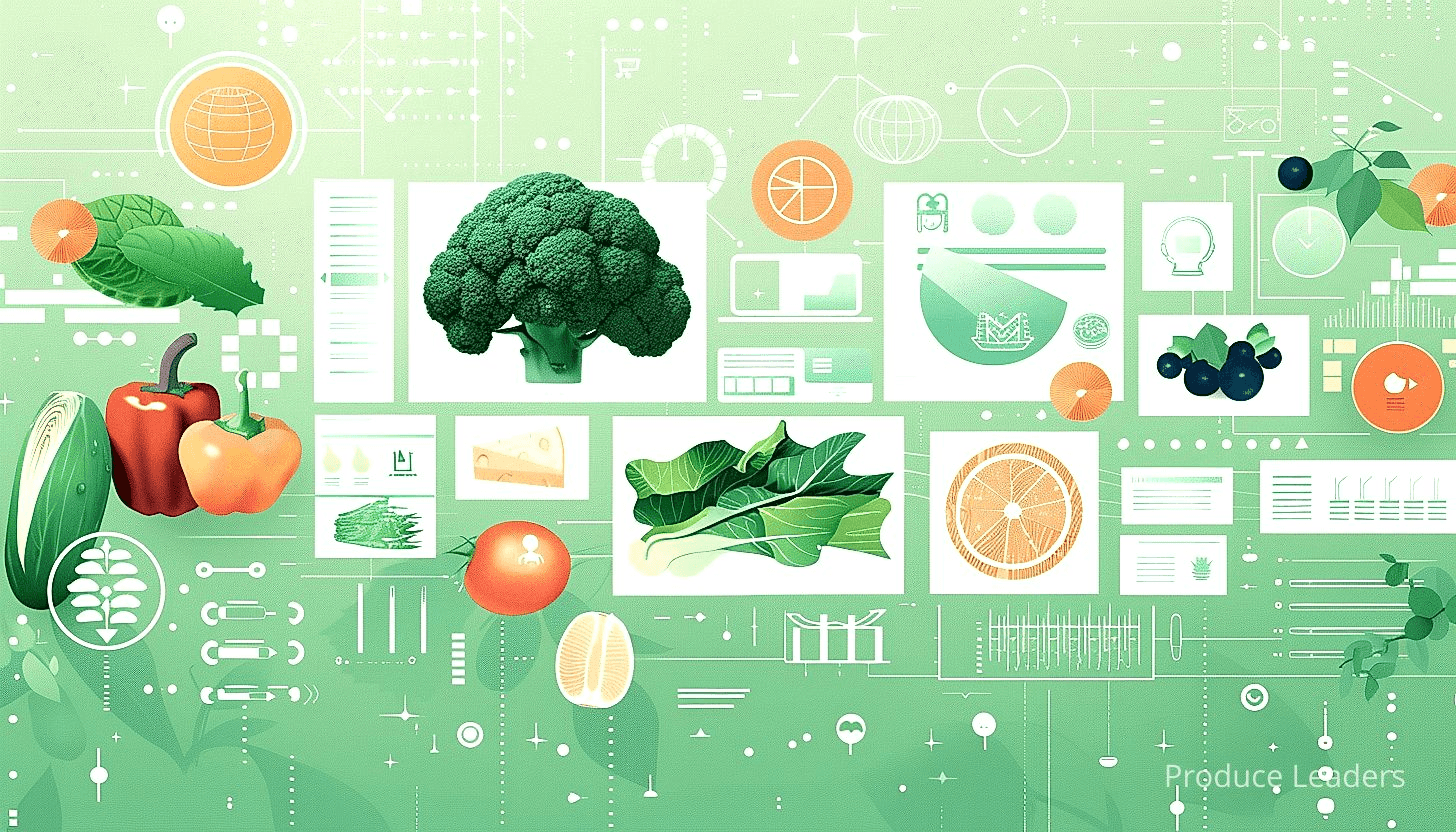
Through the pattern recognition capabilities of machine learning, these systems can accurately determine the optimal conditions for preserving various food items.
AI can help implement controlled atmosphere storage which regulates the proportions of gases like oxygen, carbon dioxide, and nitrogen, thus delaying the ripening process of fresh produce.
Meanwhile, it also provides real-time monitoring and swift adjustment of these conditions as required.
This way, dynamically adjusted, optimal preservation conditions are maintained at all times.
Before discussing the benefits of these technologies, let’s first list the various types of AI-enabled food preservation techniques that are making waves in the industry:
- Machine Learning Predictive Models: These can predict the shelf-life of food and determine the best preservation methods based on factors like temperature, humidity and composition.
- Smart Refrigeration Systems: These systems utilize AI to smartly regulate temperature and humidity levels inside commercial refrigeration units.
- AI-Powered Sorting Machines: They are designed to segregate rotten or aging produce, ensuring only the freshest items get stored.
- Autonomous Drones: Some companies employ AI-powered drones to disperse natural, preservation-promoting substances on crops while they are still in the fields.
The implementation of these technologies significantly reduces the risk of premature spoilage, largely decreasing fresh produce waste.
Moreover, it prevents retailers from stocking produce that’s bound to spoil, thus preventing substantial monetary losses.
Another advantage of AI in food preservation is its ability to help us understand the precise effect of various factors, like temperature, humidity, and atmospheric composition, on food spoilage.
Such findings are beneficial for agricultural scientists and food technologists to develop new and improved methods for food preservation.
Through artificial intelligence, we can thus hope to make the journey of fresh produce from farm to fork as waste-free and efficient as possible.
Indeed, Artificial Intelligence is not just transforming the landscape of the tech world, but also making significant strides in domains like food preservation, with the potential to reshape our approach towards reducing food waste in the future.
7. Machine Learning for Efficient Inventory Management
In Short: Machine learning, a subset of Artificial Intelligence, is revolutionizing inventory management by accurately predicting demand and reducing waste. Its potential, through real-time updates, supply chain optimization, and dynamic pricing strategies, not only boosts profitability and promotes sustainability, but is also reshaping business planning, financial management, and marketing decisions.
Efficiency in inventory management ranks high in the priorities of every business, especially in the fresh produce sector. When we discuss efficient inventory management, the aim is to optimally balance the equation of demand and supply. What does this mean? On the ground level, it implies that unsold inventories should be minimized to reduce waste, while ensuring that products are always available to meet demand.
Quite a challenge, isn’t it? Thankfully, Artificial Intelligence (AI) has the potential to transform this scenario. Specifically, machine learning, a subset of AI, can dramatically improve inventory management processes, in turn, significantly reducing fresh produce waste.
Machine learning involves the application of AI to enable systems to automatically learn and improve from experience. That’s quite an asset for inventory management. But how does it work? Machine learning models are fed with historical data related to sales, stocks, demand patterns, and other variables. Once these models are trained, they can predict future demand with a high degree of accuracy. For fresh produce, this could mean pinpointing the exact quantity of each item that consumers will demand at any given time.
This brings us to discuss how machine learning aids in reducing waste. By accurately predicting demand, retailers can order the precise amount of fresh produce needed. This helps in avoiding overstocks, which often result in products reaching their expiration date before being sold.
Moreover, machine learning algorithms are constantly learning. They consume new data, adapt, and auto-correct their predictions based on real world outcomes, making their predictions increasingly more accurate. The result? Even less fresh produce waste.
Several key strategies make machine learning models work wonders in efficient inventory management. Let’s dig in into some of them:
- Real-time update of inventory levels: Machine learning can monitor fresh produce levels in real-time, sending alerts when items are on the verge of running low or reaching shipment deadlines. This enables retailers to act preemptively to restock their inventory or push sales to prevent wastage.
- The optimization of supply chain processes: Machine learning algorithms can predict logistical issues such as delays in delivery or disruptions in the supply chain. They can provide solutions like adjusting the quantity of upcoming orders or finding alternative suppliers, minimizing the risk of overstocking perishable items.
- Offer dynamic pricing: By predicting changes in demand, machine learning algorithms can suggest price adjustments for certain items. For instance, lowering the price of items close to expiration can promote faster sales and prevent wastage.
These applications of machine learning not only reduce waste but also boost profitability. Despite the significant initial investment, most businesses can be assured of a high return on investment in the long run. Machine learning models facilitate cost-efficient operations and promote sustainable practices within the fresh produce sector.
Pro Tip: Leverage machine learning for inventory management by using historical sales data to accurately predict future demand, therefore avoiding overstocks and reducing waste.
Machine learning and AI force us to reimagine inventory management. It’s clear that its potential ranges beyond inventory optimization and waste reduction. With advanced predictive capabilities, machine learning can assist in business planning, financial management, and even marketing decisions.
While we are still in the early stages of adopting these revolutionary technologies, slowly but surely, we are seeing more evidence of their value in our everyday lives. Some might argue that machine learning technology is a ‘nice-to-have’, not a necessity. In contrast, from an economic and environmental perspective, it is quickly becoming clear that machine learning’s potential is a ‘must-have’ for efficient inventory management and reducing fresh produce waste.
The Bottom Line
Artificial Intelligence indeed has a significant role in reducing fresh produce waste and optimizing the value chain within the agriculture domain. Its capabilities empower better predictions, optimized resource allocation, enhanced quality analysis and strengthen overall waste management strategies. AI also promotes sustainable farming practices, contributing to environmental conservation. Therefore, the adoption of AI in agriculture signifies a movement towards more efficient and sustainable farming systems that will benefit the planet as a whole. It’s evident that AI has the potential to revolutionize the agriculture industry, making it smarter, more efficient, and drastically reducing food waste.

